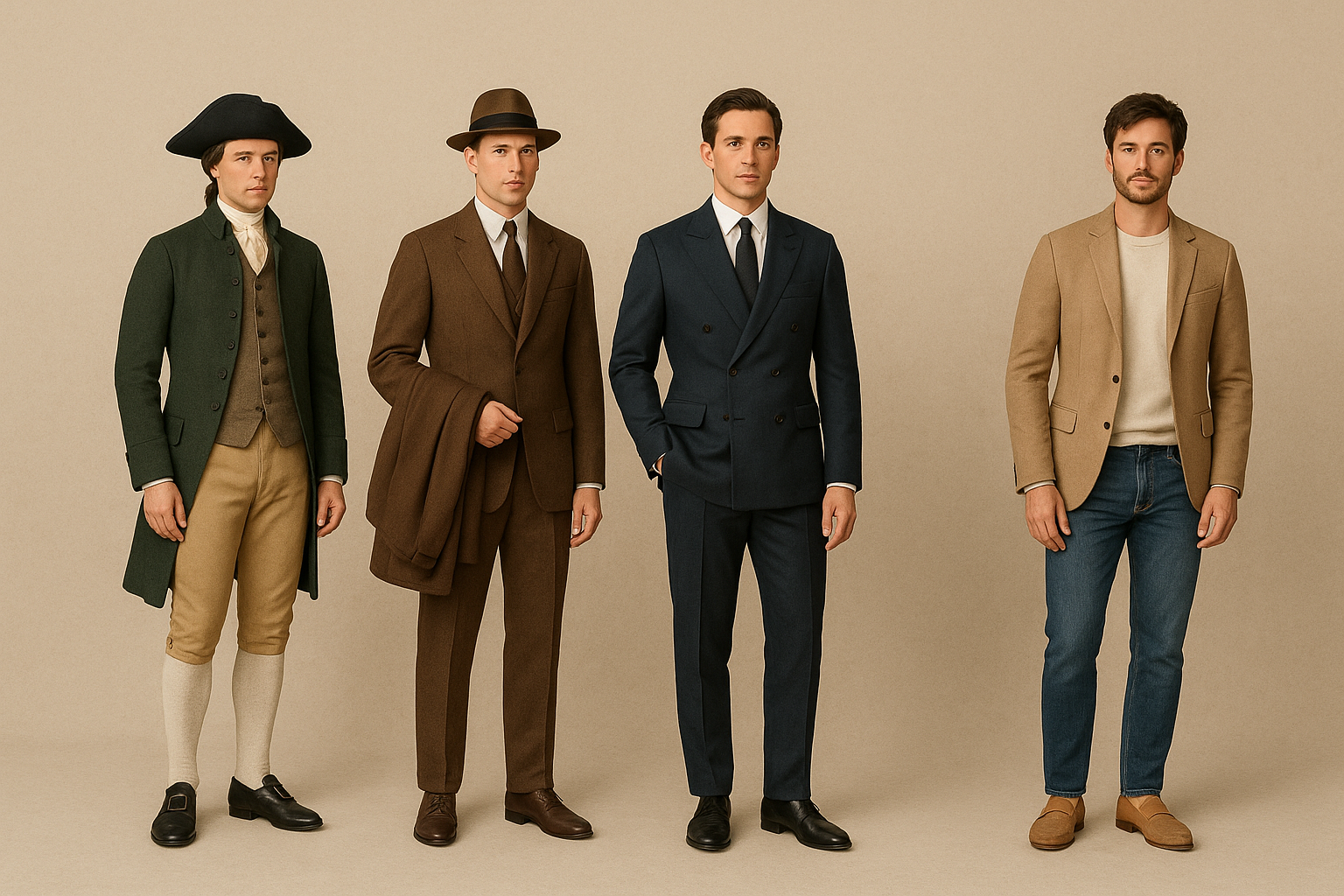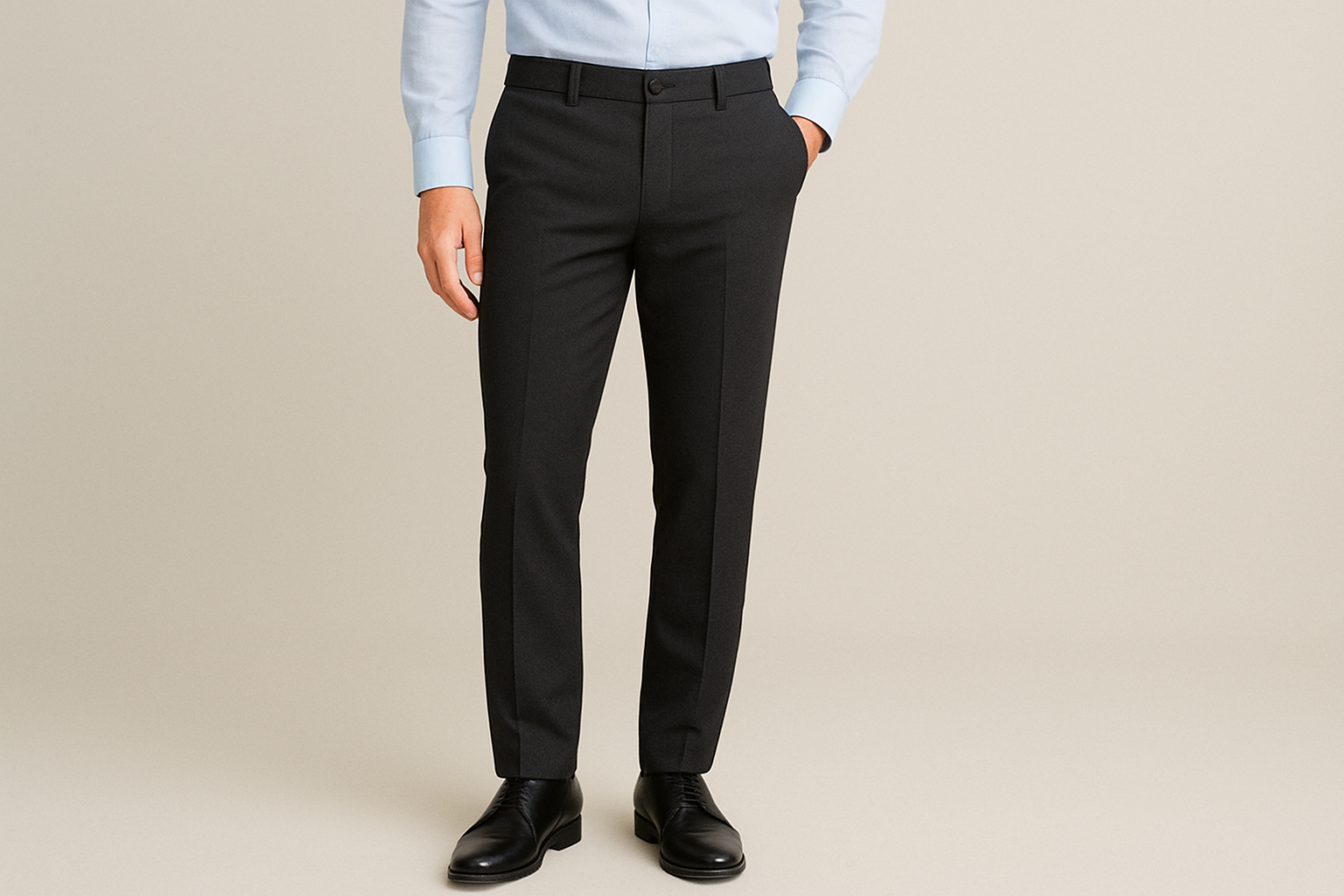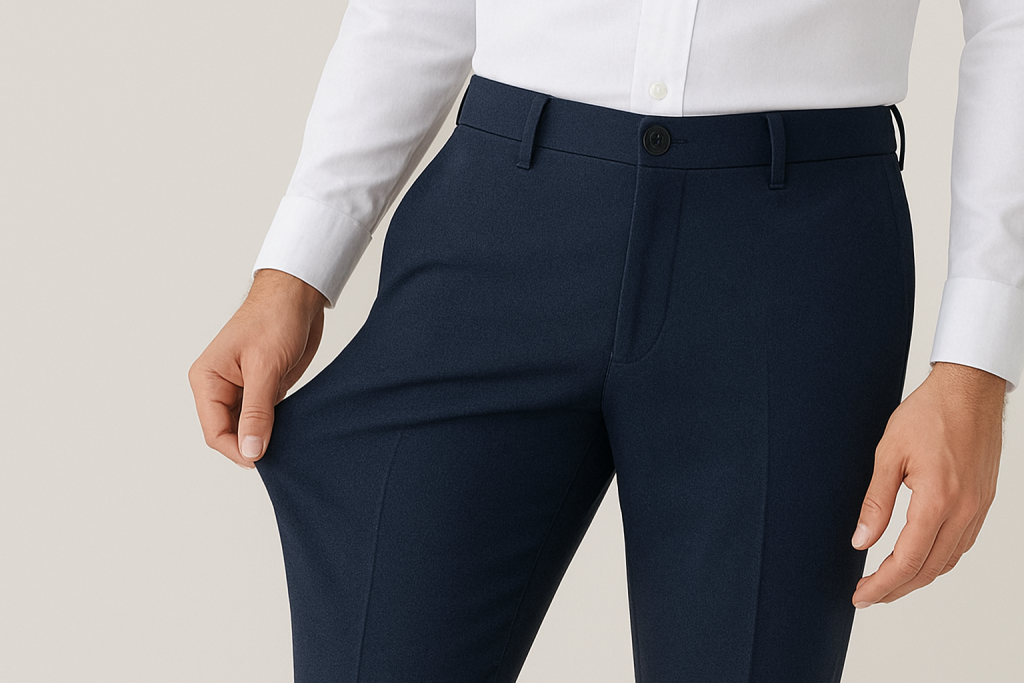Fashion has always been more than just clothing; it is a reflection of the social, cultural, and economic shifts that have occurred throughout history. Men’s fashion, in particular, has undergone a fascinating journey that mirrors the values and aspirations of each era. From the tailored suits of the early 20th century to today’s blend of comfort and sophistication, men’s fashion continues to adapt while carrying influences from the past. Understanding this evolution helps us appreciate how style shapes identity and practicality in everyday life.

Early 20th Century Elegance
The early 1900s marked an era of structure and refinement in men’s fashion. Suits were the norm, often made from heavy fabrics like wool, designed to emphasize a man’s stature and professionalism. Three-piece suits, complete with waistcoats and pocket watches, were considered essential attire for the gentleman. This period emphasized formality, and clothing often represented status and social standing. Men rarely stepped out without hats, which were both a style statement and a practical accessory.
Mid-Century Shifts in Style
By the 1940s and 1950s, practicality began to influence style more directly. The war years required durability and utility in men’s clothing, leading to more functional tailoring. Post-war, however, fashion embraced optimism with slimmer cuts and brighter fabrics. Casual wear began to emerge, particularly in the form of short-sleeved shirts and lightweight trousers. This marked the beginning of a cultural transition where men sought balance between refinement and comfort, paving the way for more versatile clothing options in the decades to come.
The Rise of Comfort in Modern Attire
In recent decades, one of the most significant shifts in men’s fashion has been the growing emphasis on comfort. No longer limited to rigid fabrics and restrictive tailoring, modern wardrobes now blend formality with ease of movement. This is especially evident in the popularity of men’s stretchable formal pants, which have redefined professional wear by combining a sharp look with flexibility. These pants are not only suitable for office environments but also practical for men who value comfort throughout long working hours or active lifestyles.
Casual Revolution of the 1970s and 1980s
The 1970s and 1980s brought a revolution in casual dressing. Denim became a universal wardrobe staple, symbolizing rebellion and individuality. Bold colors, flared trousers, and wide collars became synonymous with self-expression. By the 1980s, power dressing took center stage, emphasizing broad-shouldered blazers and sleek ties, reflecting the corporate culture of ambition and success. This era highlighted the ability of fashion to align with broader cultural and economic trends, influencing how men dressed both in and out of the office.
Blending Tradition With Modern Functionality
Today, men’s fashion represents a seamless blend of classic designs and modern innovations. Tailoring still holds value, but the fabrics and structures have evolved significantly. Clothing now adapts to contemporary demands where men expect versatility and practicality. Exploring the benefits of comfort-fit styles highlights how modern wardrobes are evolving, especially with men’s stretchable formal pants that combine a tailored aesthetic with mobility. Whether paired with a blazer for formal settings or styled casually with a shirt, they reflect the merging of tradition and innovation in everyday wear.
The Role of Technology in Fabric Innovation
Advancements in textile technology have had a major impact on men’s fashion. Stretch fabrics, wrinkle resistance, and moisture-wicking materials have changed the way men shop for clothing. Instead of choosing between style and comfort, modern designs often incorporate both. By experimenting with mixing fabrics, men can add personality and depth to their outfits while still benefiting from these innovations. This development has made fashion more accessible and suited to the fast-paced lifestyles of today, allowing clothes to adapt seamlessly to various settings without compromising appearance.
Contemporary Focus on Versatility
Versatility has become the cornerstone of men’s fashion in recent years. With more men juggling professional responsibilities and active personal lives, clothing is expected to serve multiple purposes. The popularity of men’s stretchable formal pants reflects this growing demand, as they can transition from boardroom settings to casual environments with ease. Their adaptability shows how fashion is no longer bound by rigid categories but instead encourages fluidity and practicality in everyday wear.

Globalization and Cultural Influence
Another defining feature of men’s fashion evolution is globalization. The influence of international styles has expanded wardrobes beyond traditional limits. Men are now more open to experimenting with different cuts, colors, and cultural aesthetics. Streetwear, for example, has become a global phenomenon, blending casual comfort with bold statements. Simultaneously, cultural appreciation has brought diversity into modern dressing, where men adopt styles once unique to particular regions. This has created a more interconnected and innovative fashion landscape.
Sustainability in Men’s Fashion
As awareness of environmental issues grows, sustainability has become a major trend shaping men’s clothing. Eco-friendly fabrics, ethical manufacturing practices, and timeless designs are increasingly prioritized. Men are investing in pieces that are durable and versatile rather than following fast-fashion cycles. This focus not only aligns with environmental values but also supports the long-term quality of wardrobes, reflecting a responsible and forward-thinking approach to fashion.
Conclusion
The journey of men’s fashion through the decades reveals more than changing hemlines or fabrics; it reflects cultural shifts, technological advancements, and evolving lifestyles. What began as rigid tailoring has transformed into an era where versatility, comfort, and sustainability coexist with style. The rise of innovations like stretch fabrics and versatile clothing highlights the balance between tradition and modern needs. As men continue to navigate dynamic personal and professional lives, fashion will remain an essential tool of expression and functionality, constantly adapting to the demands of the time.


